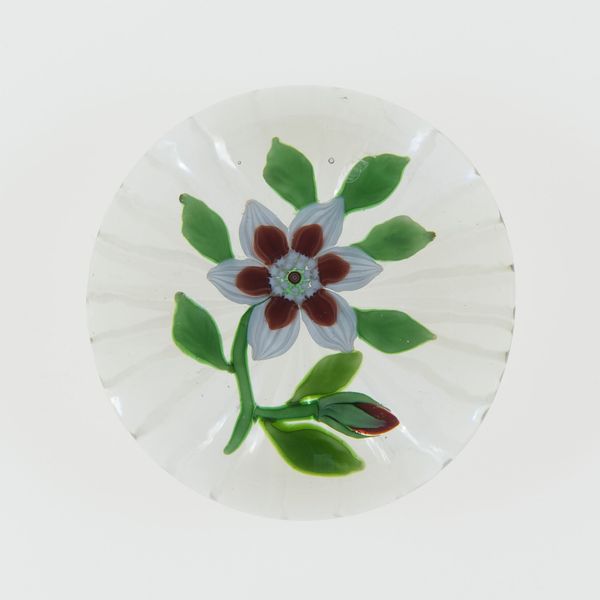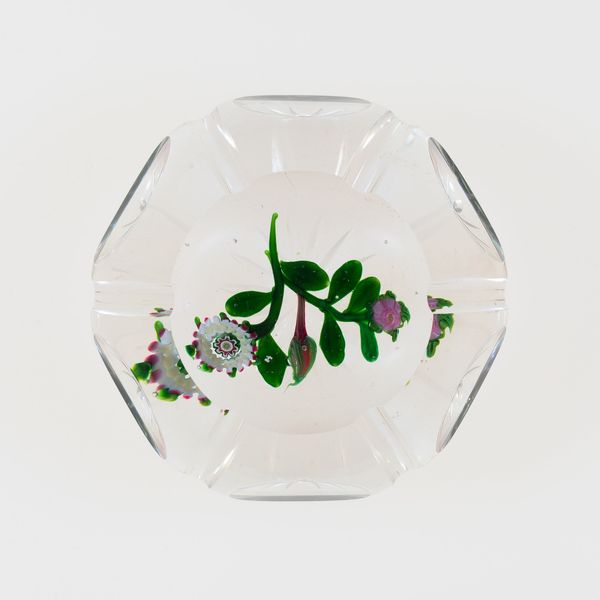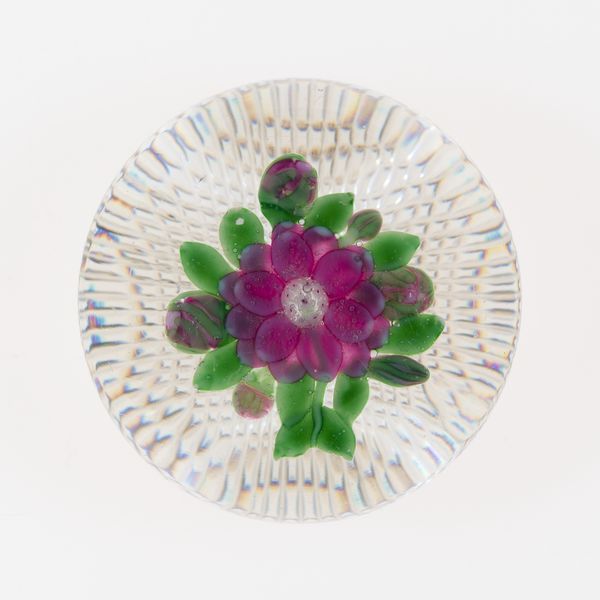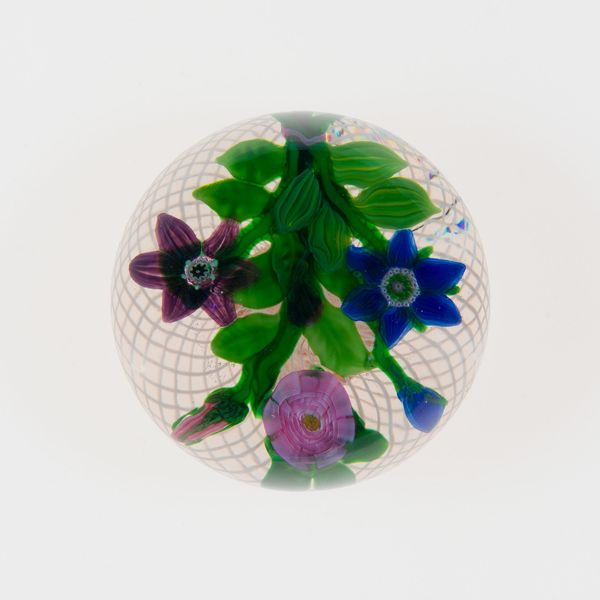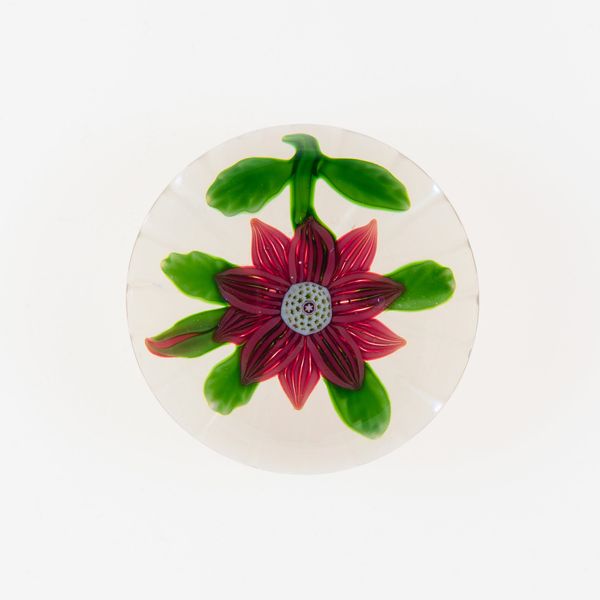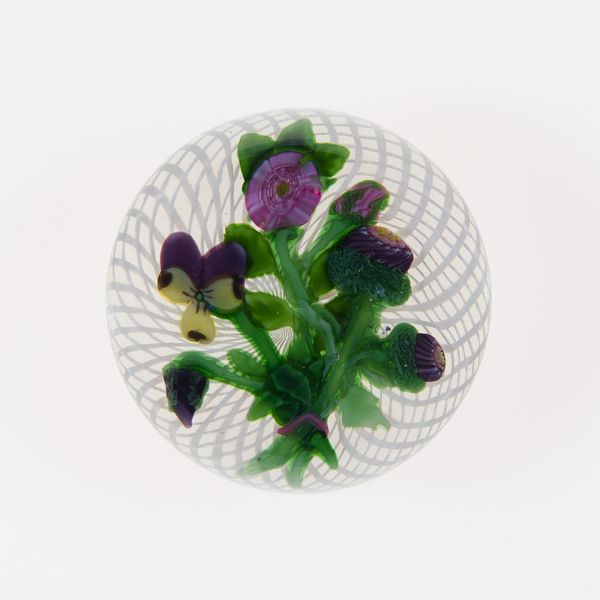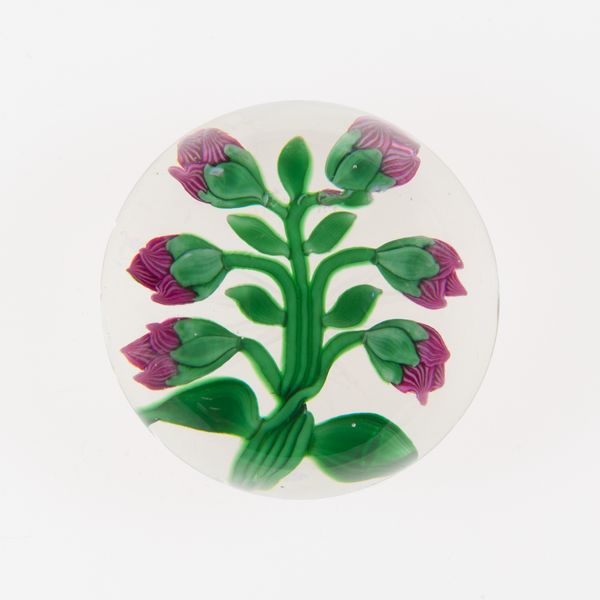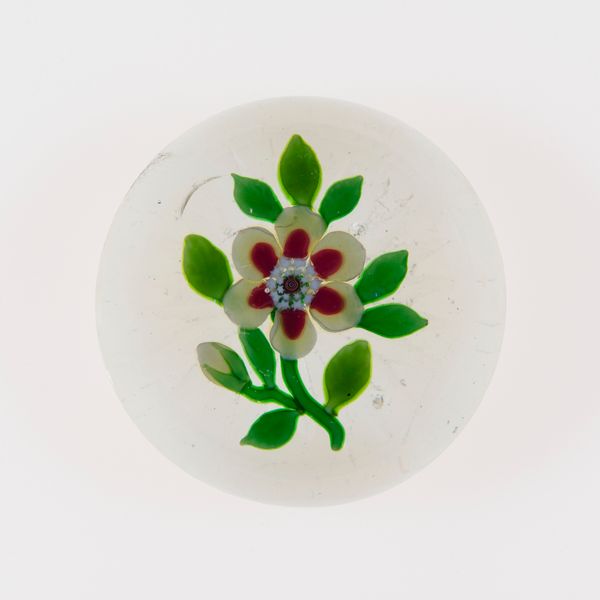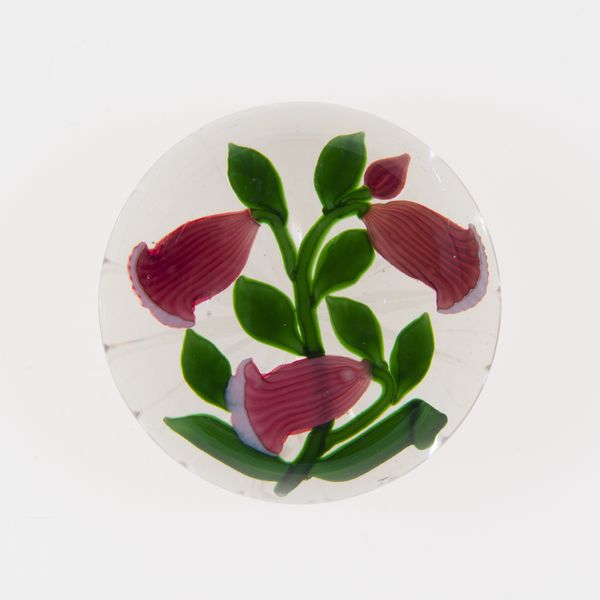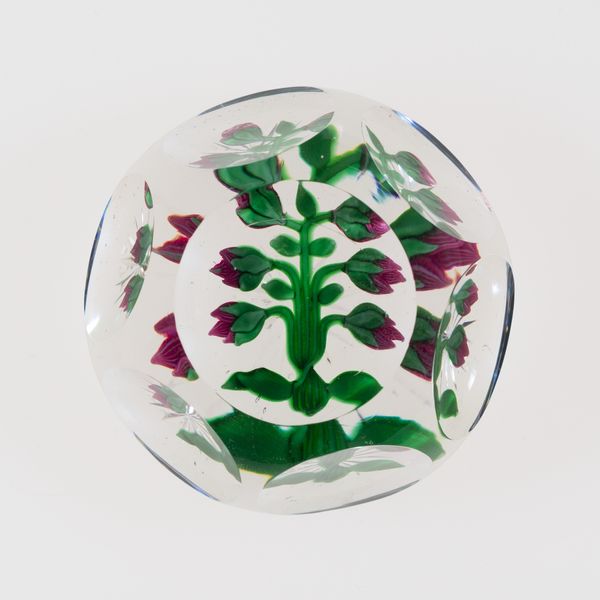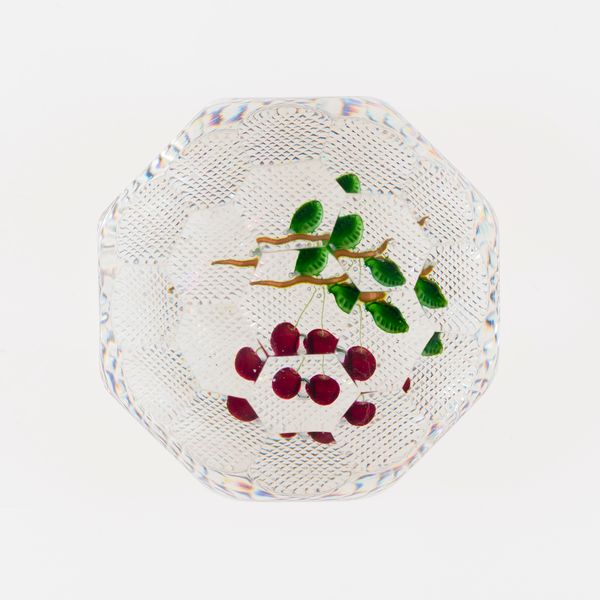
paper, glass, sculpture
#
paper
#
glass
#
sculpture
Dimensions: Diam. 8.9 cm (3 1/2 in.)
Copyright: Public Domain
Curator: This jewel-like sculpture is a paperweight crafted by Baccarat Glassworks sometime between 1845 and 1860. It's currently part of the collection at the Art Institute of Chicago. Editor: It has such a whimsical feel. The vibrant colors frozen within that clear glass give the flowers an ethereal, almost dreamlike quality. Curator: Indeed, its charm is undeniable. But consider the social context of the mid-19th century. This would have been a bourgeois object, signaling status through its display of luxury and leisure. Editor: Ah, it's interesting you say that. Looking at it again, the contained, almost airless presentation reminds me a bit of the Victorian obsession with controlling and classifying the natural world. Were these botanical studies often the pursuit of privileged women during the period? Curator: Exactly. In this regard, this paperweight encapsulates a societal moment where knowledge, power, and beauty were carefully curated and contained within the domestic sphere, sometimes by women with the benefit of privilege. Editor: Yes, there is a powerful symbolic compression in this piece. The tightly arranged flowers – the central red bloom, the delicate white bellflowers – they’re held captive, eternally perfect, reflecting aspirations for a manicured world. It feels both celebratory and somewhat claustrophobic. Curator: The way light refracts through the glass distorts and amplifies the imagery as well, further contributing to its dynamic presence. One has to also acknowledge that these flowers would also have conveyed a meaning in terms of floriography, the language of flowers that encoded hidden feelings. The viewer is implicated in trying to understand these references to courtship, or friendship, etc. Editor: And this creates almost a shadow world within the glass. It becomes an object for contemplation, far exceeding its function as just a "paperweight". It represents many cultural aspects about control, preservation, and meaning. Curator: Ultimately, "Paperweight" isn't simply decorative; it is representative of its time and gendered implications for power in the decorative arts. It encourages us to ponder the interplay between art, craft, society, and memory. Editor: I'll certainly think of it differently now, considering its cultural layers beyond just its surface beauty. It's more loaded than I originally perceived!
Comments
No comments
Be the first to comment and join the conversation on the ultimate creative platform.
